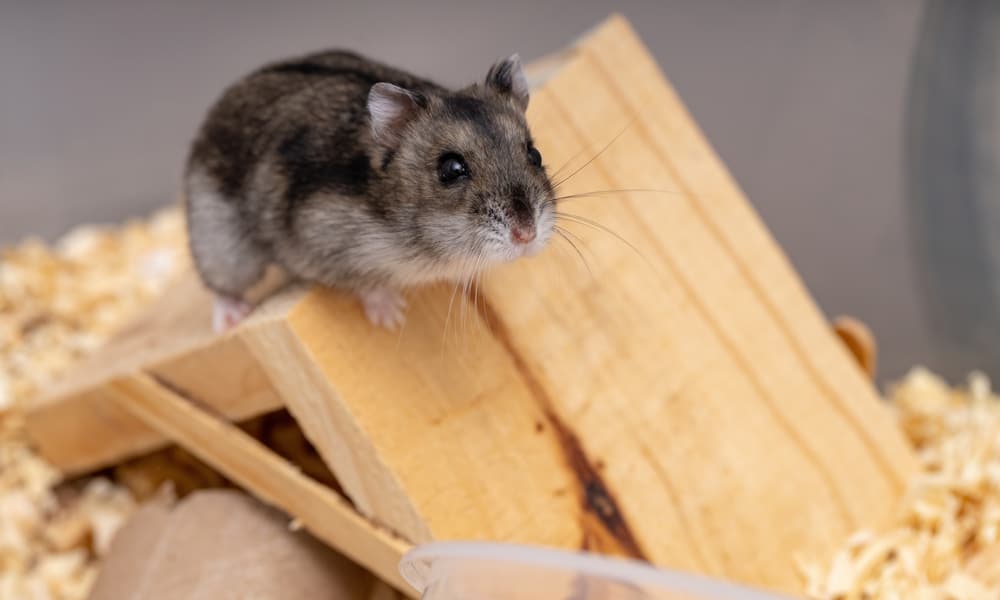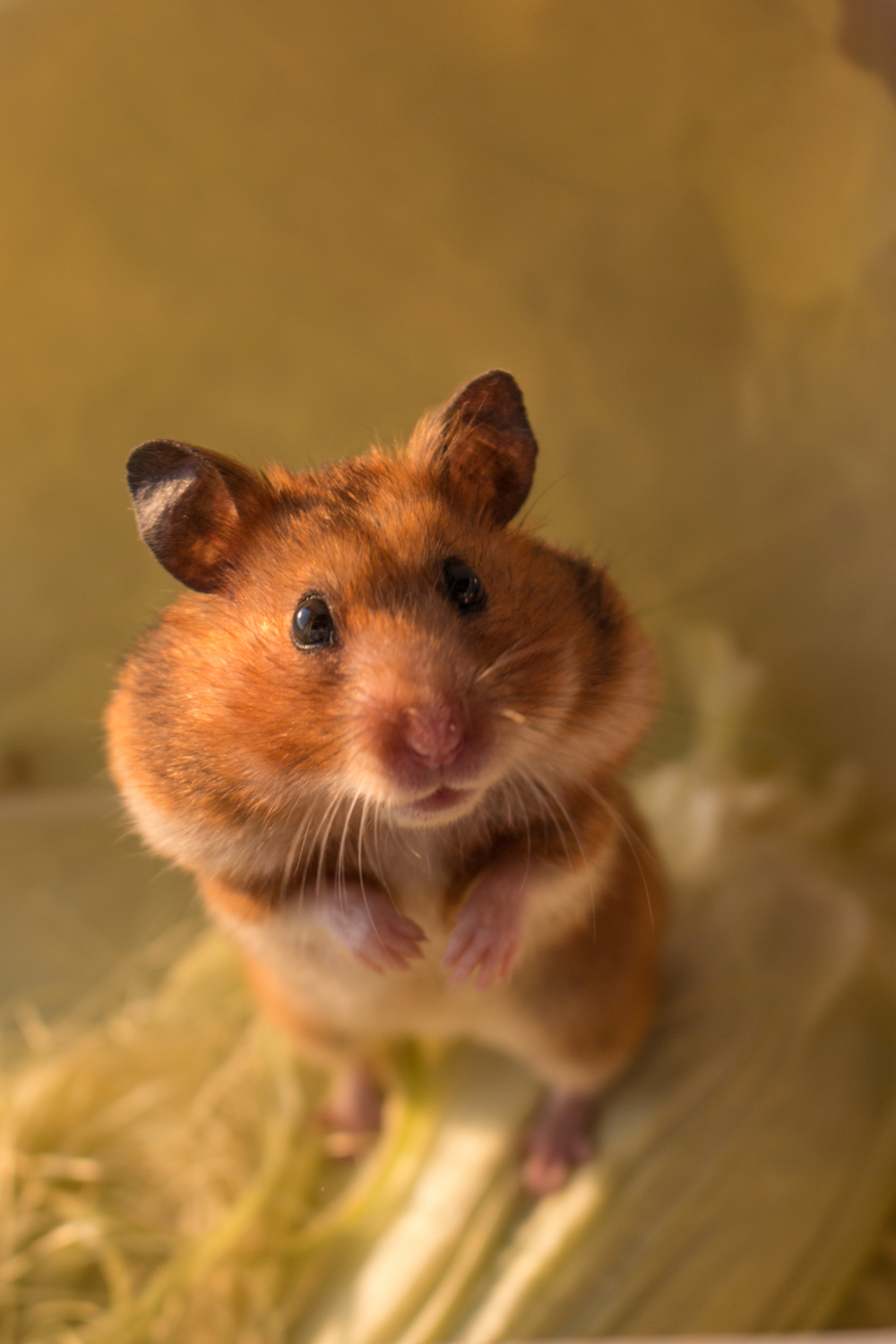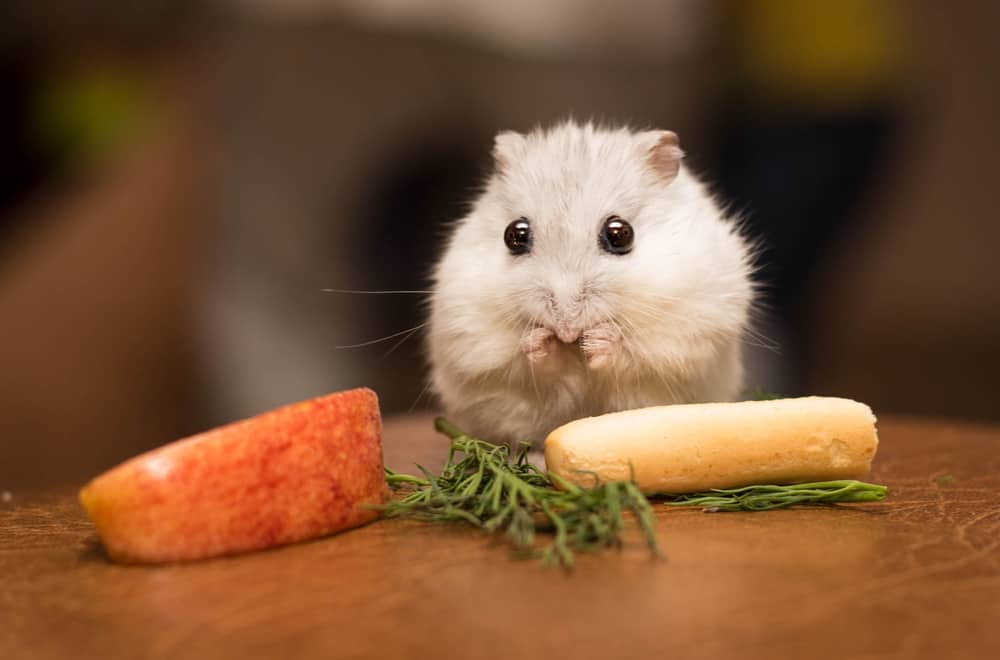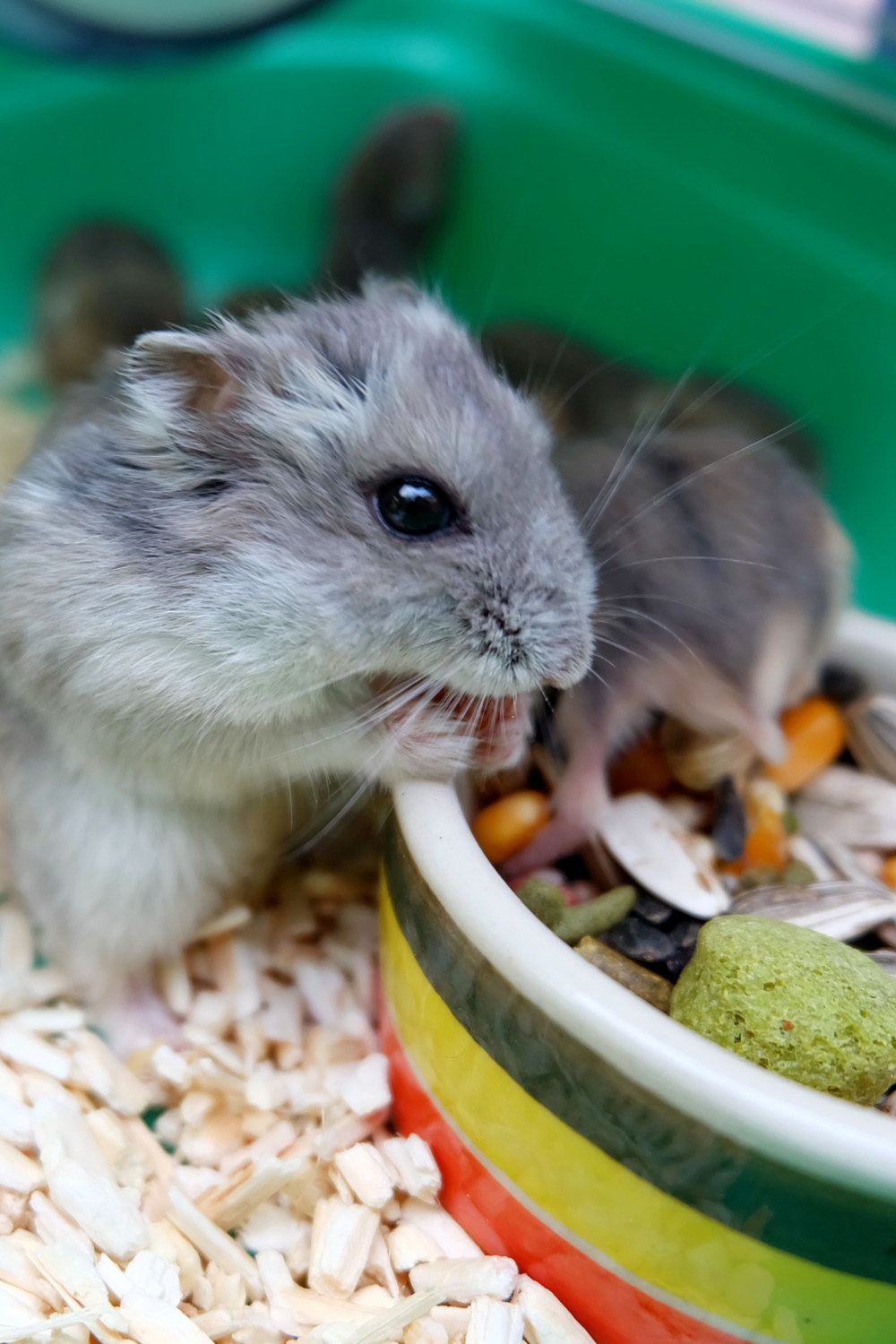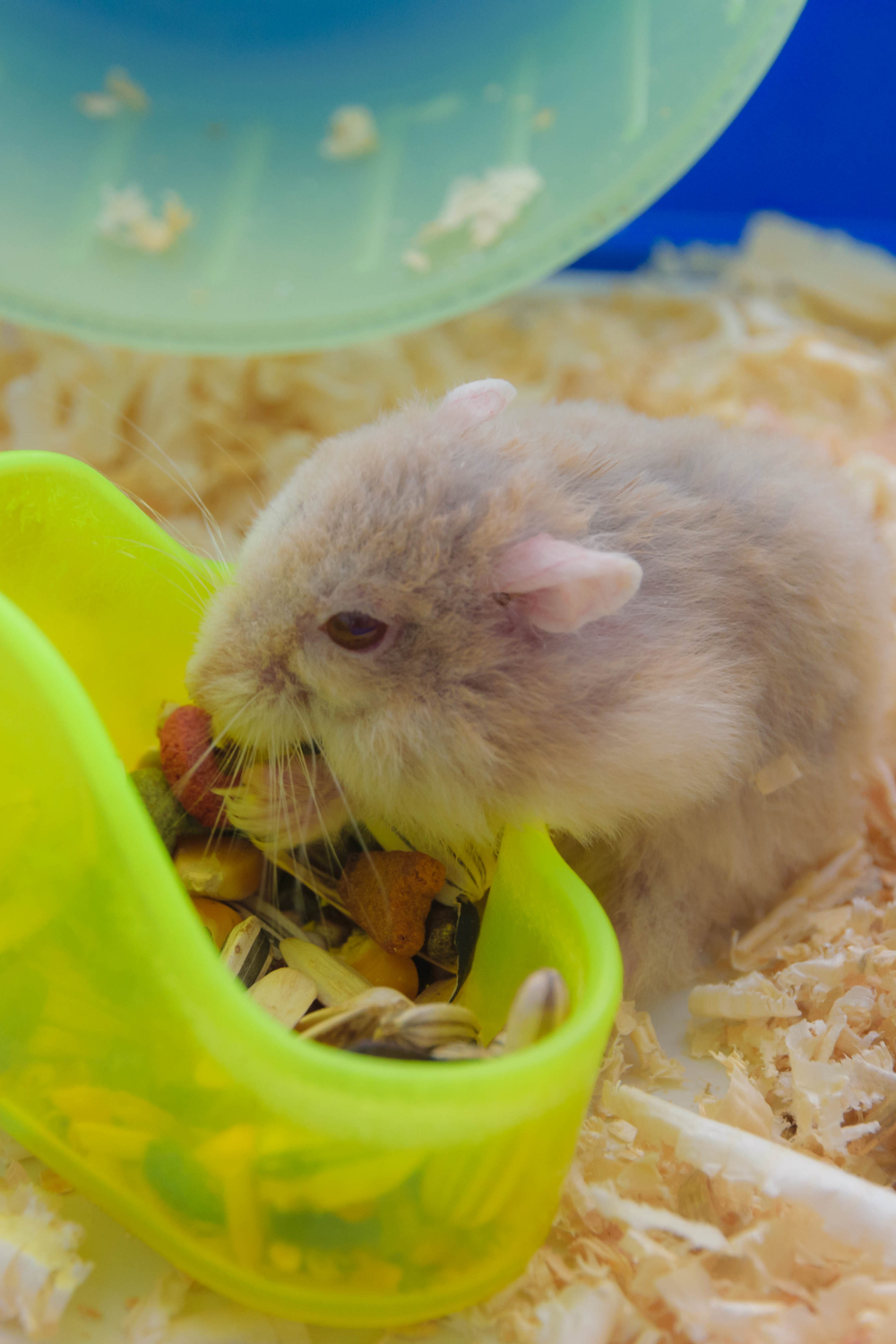What has big cheek pouches, a thick body, and a short tail?
You’re right-a, hamster!!!
These fluffy-haired little critters have made their way into the homes and hearts of people all over the world. So if you are thinking about adopting a hamster, I know you will want to be a great parent to your little fluffy.
Read on to learn about hamsters in the wild, their habits, traits, and how to best care for them domestically.
Hamsters Habits & Biology
These cute little members of the rodent order have geographical roots in Syria, Greece, Romania, Mongolia, China, Mongolia, Russia, and Siberia.
Despite their wild origins, these cuddly animals are frequently the first pet for children because of how easy it is to take care of them.
FUN FACT: Hamsters are incredibly agile creatures, and despite their stubby legs—a BBC Earth documentary films two Russian hamsters clocking over 600 strides per minute on their hamster wheel.
In the wild, hamsters dig burrows, a hole, or series of interconnected underground paths. Hamsters purpose their burrows for sleeping, raising their young, storing extra food, and hibernating.
As you can imagine, the amount of energy that a hamster expends is pretty significant, considering its small stature. In general, hamsters grow between 1.8 to 14 inches in length- a pretty substantial range.
Furthermore, hamsters come in many sizes- from the Roborovski hamster weighing between 0.7 to 0.9 ounces to its European relative weighing between 7.8 to 16.2 ounces.
There are about 24 species of hamsters in existence. Perhaps most notable for its golden hair, the Syrian hamster is the poster image for these little rodents.
In today’s pet market, you can commonly find five types of hamsters, including the Syrian, Campbell’s, Winter White’s (Siberian), Roborovski, and Chinese species.
A hamster’s lifespan is typically between two and four years. While in your care, make it a priority to carefully adopt a suitable nutrition scheme for its health and happiness.
What Do Hamsters Eat in the Wild?
Hamsters are omnivores, meaning that their diet consists of food from both plant and animal origin. However, since hamsters are nocturnal creatures, they must scamper around after hours to forage for their share of food.
You will be pretty impressed to find that the RSPCA notes that hamsters can cover up to 5 miles per day [or night]. Try to imagine running the equivalent of a marathon every day, searching for food, and avoiding being eaten by a predator. Can you say ANXIETY?
Luckily, fewer predators are out at night, giving these small little animals with poor eyesight a better chance. Nevertheless, a hamster’s ultra-sensitive ears, nose, and whiskers seem to compensate for their lack of good vision.
Additionally, hamsters use the scent glands to mark their territory to find the way back to their burrow quickly when on the unlucky side of the chase.
As we will find out, their diet is quite expansive but requires a careful balance of protein, fat, and fiber. In the wild, hamsters eat:
- Seeds
- Grains
- Nuts
- Cracked corn
- Fruits
- Vegetables
- Insects
- Frogs
- Lizards
- Other small mammals
Hamster’s adaptation to the arid conditions of their natural habitat has endowed our fuzzy friends with adorably chubby cheeks. But, with all funniness aside, a hamster’s pouches allow it to carry large amounts of food back to its stash inside their snuggly underground homes.
At home, consider and maybe even reevaluate the quantity, variety, and quality (QVQ) of your hamster’s diet.
What Do Hamsters Eat as Pets?
A hamster’s diet is key to its health and happiness. The last thing you want is to have an overweight or malnourished hamster.
Typically, hamster moms [and dads] can decide between a pelleted diet, seed mix diet, fresh food diet, or a mix thereof.
Pet food choices can be overwhelming, and knowing what fresh foods are safe can cause just as much anxiety. Therefore, I recommend that you continually monitor and discuss your hamster’s health with its medical care provider.
Pelleted diets include a mixture of minerals and nutrients specifically formulated for your hamster’s growth and development.
Seed mix diets usually contain a mixture of dried seeds, grains, and vegetables.
You should also incorporate fresh food into your hamster’s diet. However, be careful not to overindulge your cute little friend with treats, as this could adversely affect your hamster’s health.
In general, ‘hammy’ parents choose a recommended pellet to meet the balanced nutrition needs of their fuzzy friend. In addition to this, seeds and other fresh foods supplement their daily regimen and second as an enriching treat.
Some trusted brands for hamster pellet include Kaytee, Oxbow, Burgess, and Harry Hamster.
In addition to recommended fat and protein, it is beneficial to include an additional fiber source in your hamster’s diet. For example, the PDSA recommends timothy hay which helps “prevent obesity, maintain a healthy urinary system, and improve overall health. [It] also lowers the incidence of soft stools, intestinal gas, and bloating.”
Finally, you may also offer special treats such as mealworms, boiled eggs, pasta, and nuts.
As you find a nutrition plan that suits your hamster, be on the lookout for picky eating, and be sure not to overfeed or undernourish your hamster.
Best Tips for Feeding Your Hamster
Unfortunately, the life of a pet hamster can fall victim to boredom if they do not stay occupied and active. The great news is that exploring different feeding strategies can help solve this inconvenience that goes hand-in-hand with the small-animal syndrome.
Even though your hamster is domesticated, feeding your hamster should be fun and appeal to their more primitive instincts. As I mentioned earlier, hamsters spend a good chunk of their awake time foraging for food.
This is where you come in…
- Scatter food around your hamster’s cage instead of feeding them out of a bowl.
- Hide some food inside tubes, wrapped-up paper, or boxes to make finding food more like a treasure hunt.
- Refrain from giving your hamster too many sugary sweets.
- Do not feed your hamster muesli-style feed mixes. Hamsters tend to leave the healthier parts and eat the sugary parts instead. (Firstly, you should be aware that this can cause painful dental disease in your fluffy friend. And, secondly, some pet hamster species are highly prone to Type II diabetes.)
- If you are introducing new food to your hamster, take it slow and observe whether or not your hamster cares for the taste.
- Provide plenty of variety for your hamster’s feeding, trying to give them some sort of fresh food every day.
- Depending on age and health status, your hamster’s daily diet should be composed of approximately 5% fat and a minimum of 15% protein.
- Please do not give your hamster foods containing whole oats as they can puncture its delicate cheek pouches.
- Avoid acidic food altogether.
- Provide your hamster with fresh water every day.
- Only provide the amount of food your hamster needs for that day. If your hamster builds a stockpile of extra food, it may overindulge and become overweight.
- Remove fresh food from your hamster’s cage every day so that its cage does not attract pesky insects.
- Feed your hamster in the evening as they begin to wake up. Remember that these critters are nocturnal, so this will be like its breakfast.
As you can see, a hamster’s diet is critical to their health and well-being. As our fuzzy friend’s companion and caregiver, it is our responsibility to take their health seriously.
Other Tips for your Hamster’s Health & Happiness
- Purchase a hamster cage that has plenty of floor space in addition to plenty of room for miscellaneous playing and activity equipment.
- Provide plenty of things to gnaw on, such as untreated softwood. (This is particularly important because a hamster’s teeth grow continually. If not given an item to shave their teeth down, a hamster’s teeth will eventually damage the roof of their mouth and lips.)
- Provide your hamster with plenty of exciting items to climb and explore.
- Line the bottom of the cage with a thick enough layer of shavings or compost for your critter to burrow in.
Remember, the reality is that your precious little ‘hammy’ has a relatively short time upon this great big Earth. So our job is to keep their health our priority and make their sweet little lives as comfortable and happy as possible.
Summary
Who wouldn’t want a hamster? After all, they are so cute.
True as that is, hamsters have sophisticated little lives in the wild, and they have adapted to fare quite well on their own.
Now that we have brought them into our homes, our hamsters are looking to us for love and care.
I advise you to become literate on the unique characteristics of the species of hamster that you have adopted; always remembering to employ healthy habits, including a well-balanced diet and eating regimen.
Would you please comment below with any questions or concerns you have about the hamster diet and nutrition?
